In Islam, water is regarded as the source of life, created by God. It cleanses the body and purifies the spirit, making its presence essential not only in daily life, but also in religious and cultural practice.
For the Ottomans, commissioning a fountain was an act of piety. At the same time, it was an expression of wealth, power and social standing. Over the centuries, fountains became integral to the city’s architecture. They served a practical role, providing water to the population, but also beautified public squares, mosque courtyards, busy streets and private residences.
Today, you will find Ottoman fountains throughout Istanbul. Some are monumental and richly decorated, others are modest and unassuming. Many still flow with water, centuries after their constructions. Others stand neglected as silent witnesses of the past.
OTTOMAN FOUNTAINS IN SULTANAHMET
Perhaps, the most celebrated Ottoman fountain in Istanbul is that of Sultan Ahmed III, built in 1728 in the Rococo style of the Tulip Period. Situated between Hagia Sophia and the Imperial Gate of Topkapi Palace, it is admired by visitors to this historic area of the city.
With its elaborate decoration, inscriptions and harmonious proportions, it stands as a masterpiece of Ottoman civic architecture.
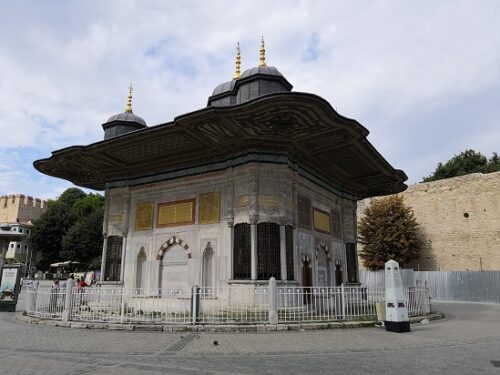
Another landmark is the German Fountain in Sultanahmet Square. Constructed in Germany and transported to Istanbul in pieces, it was inaugurated in 1900, to commemorate Kaiser Wilhelm II’s visit.
Its domed, gazebo-like form and Neo-Byzantine mosaics make it one of the square’s distinctive features.
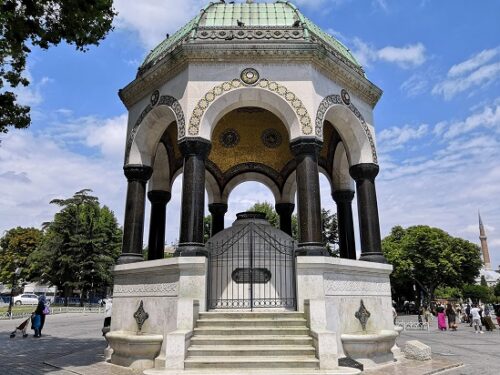
Near the mausoleum of Sultan Mahmud II stands a refined and intimate example that you can see in the photo below.
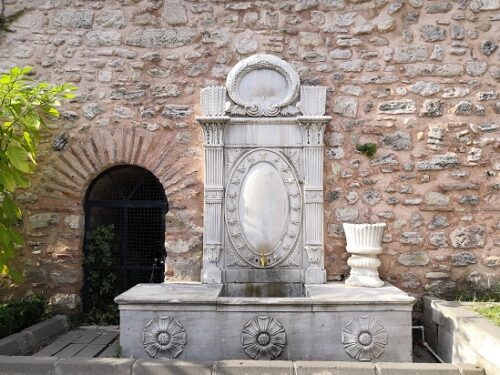
EMINÖNÜ
Not all fountains were monumental. In Ottoman society, the saka – the water carrier – was a vital figure. Sakas drew water from designated fountains and delivered it to households, the palace or the Janissary corps. Their profession was tightly regulated, with only a fixed number of sakas permitted to operate from any one fountain.
The Saka Fountain in the Bazaar quarter is a surviving reminder of this essential urban service.
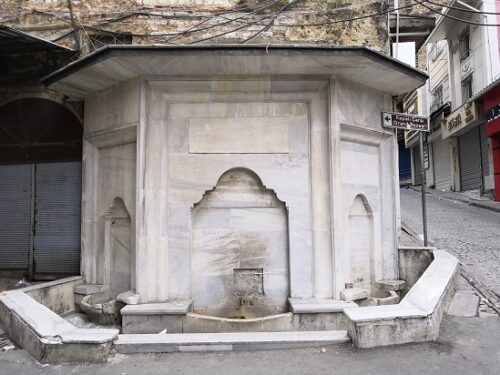
The Turhan Hatice Sultan Fountain, located beside the Yeni Mosque complex, continues to serve the public today. The powerful Valide Sultan of Sultan Mehmed IV commissioned it in the late 17th century.
The fountain reflects the architectural tendencies of the classical period, with balanced proportions, finely carved stonework and elegant calligraphy. Situated in the city’s busiest port district, it offered refreshment not only to worshippers, but also to sailors, merchants and travellers arriving at the Golden Horn.
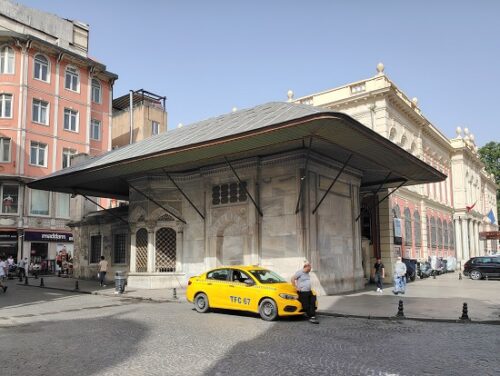
Another prominent example stands by the Suleymaniye Mosque, completed in 1557 under Sultan Suleiman the Magnificent and designed by the legendary imperial architect Mimar Sinan.
While the mosque dominates the skyline as one of Istanbul’s greatest architectural achievements, the fountain in its forecourt plays a quieter, yet equally important role.
Constructed as part of the mosque complex, it reflects Sinan’s restrained classical style. Its placement in the square underlines the importance of water in Ottoman life.
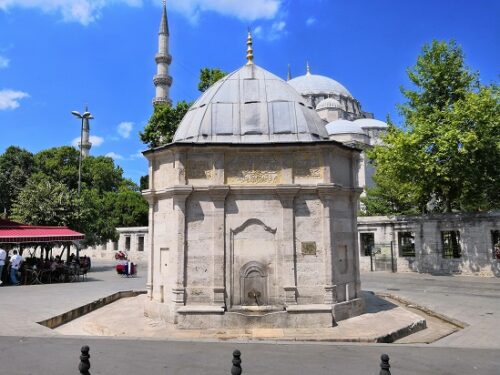
FATIH
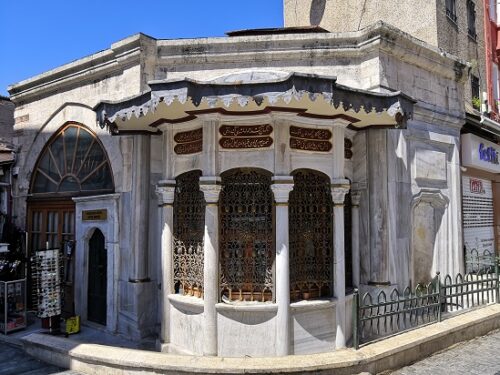
The Yavuz Sultan Selim Fountain stands close to the mausoleum of Sultan Selim I. Although modest in size, it gains significance from its setting. This mosque commemorates the sultan who first brought the Caliphate under Ottoman rule.
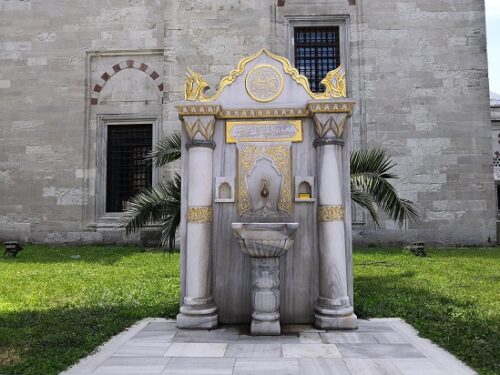
AKSARAY
I was on the way to visit Pertevniyal Valide Sultan Mosque, when I came across this recently restored fountain in Horhor Street.
The fountain took its name from the gentle “hor hor” sound of flowing water. With no inscription to identify its patron or exact date of construction, it gradually became the Horhor Fountain.
Records suggest that it was likely build during the reign of Fatih Sultan Mehmed. Later, it became part of the Suleiman the Magnificent Foundation and was repaired during his era, after which it was also referred to as the Fountain of Suleiman the Magnificent.
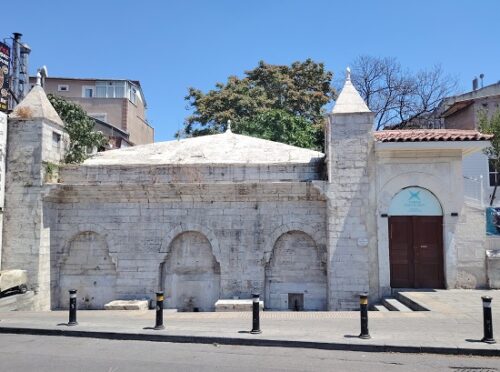
OTTOMAN FOUNTAINS IN BEYOĞLU
Although Beyoğlu developed later than the old city, it also contains notable Ottoman fountains.
The Bereketzade Fountain, today standing opposite the Galata Tower, originally belonged to a mosque founded by Berektzade Haci Ali bin Hasan, the head-muezzin of Fatih Sultan Mehmed.
Rebuild in 1732 and relocated in the mid-20th century, it remains a historic jewel of Galata.
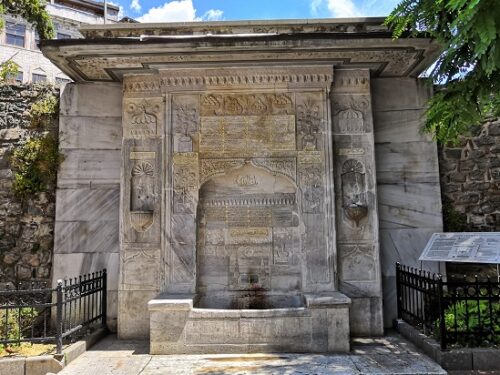
The Matbah Emini Hasan Ağa Fountain, located on Yüksek Kaldırm Street with views of Galata Tower, is one more outstanding example.
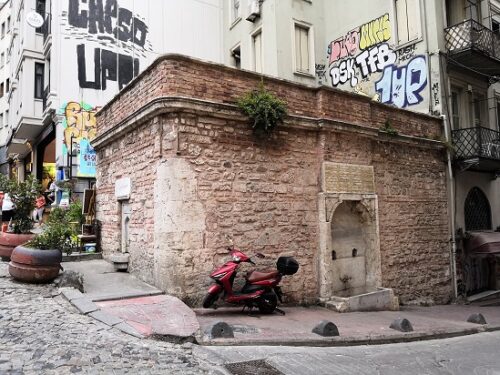
TOPHANE FOUNTAIN
In Tophane, Sultan Mahmud I commissioned one of the city’s grandest fountains. Built in 1732 during the Tulip Period, the Tophane Fountain was designed in Rococo style by Kayserili Mehmed Ağa.
Although altered over time, it echoes the design of Sultan Ahmed III’s fountains in Topkapi and Üsküdar.
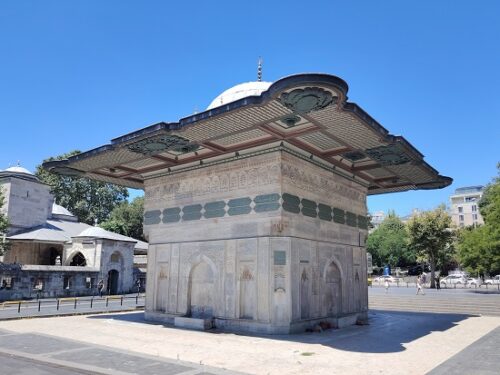
OTTOMAN FOUNTAINS IN EYÜP
The Eyüp district, a sacred site for Ottoman Istanbul, preserves two remarkable imperial fountains.
The first, part of the Mihrishah Sultan complex that stands along the Cülus Yolu (Acccession Way) and includes several important structures such as an imaret (soup kitchen), a mausoleum and a sebil, is designed in the distinctive Ottoman Baroque style.
Mihrişah Valide Sultan, the mother of Sultan Selim III, commissioned the construction of the complex in the late 18th century.
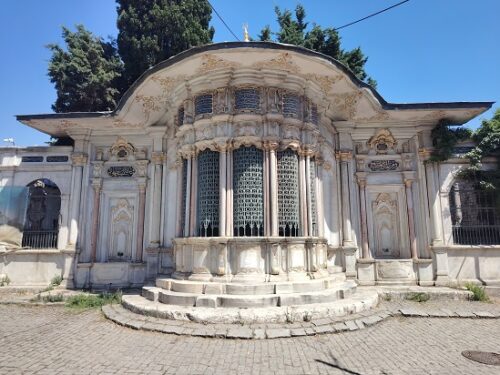
Nearby, another fountain, dedicated to Sultan Suleiman the Magnificent, consists of twin structures. It stands as a further testament to Ottoman civic architecture in the revered part of the city.
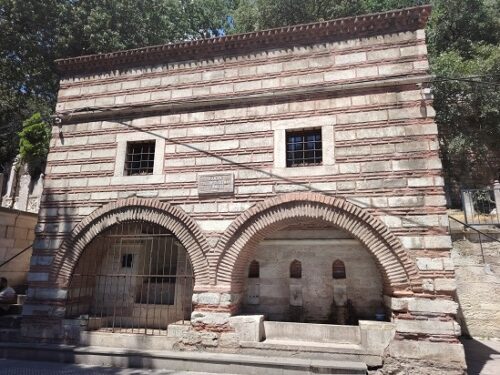
OTTOMAN FOUNTAINS IN ÜSKÜDAR
Across the Bosphorus in Üsküdar, Sultan Ahmed III commissioned another Rococo fountain in 1728-1729, dedicated to his mother Emmetullah Rabia Gülnuş Sultan.
Located near the Mihrimah Sultan Mosque and the busy port, it is one of the finest Rococo-style fountains in Istanbul and a highlight of Üsküdar’s architectural landscape.
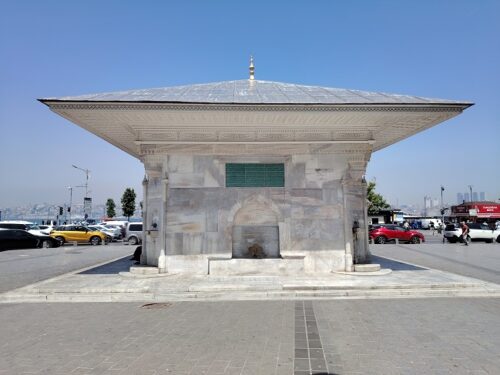
Beyond the monumental fountains, countless smaller ones still serve their neighbourhoods. I encountered one near a fruit and vegetable market in Üsküdar, where a passer-by stopped to wash his hands, just as countless others had done before.
These modest fountains, often overlooked, reveal the Ottoman concern for both function and beauty. They remain an enduring part of Istanbul’s living heritage.
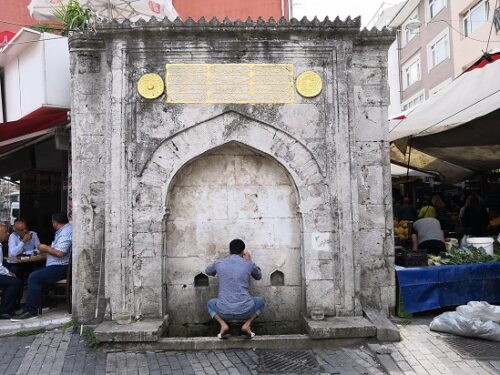
Ottoman fountains adorn every corner of Istanbul. Some astonish with their grandeur, other charm with their simplicity. Together, they embody faith, piety and artistry while reflecting the architectural tastes of their time.
Each fountain carries a story, whether of a sultan, a benefactor or a community. Yet, even without knowing their histories, you can stand before them, admire their beauty and perhaps drink from their waters, continuing a centuries-old tradition in the heart of the city.
Back to Turkey


